- News
- Reviews
- Bikes
- Accessories
- Accessories - misc
- Computer mounts
- Bags
- Bar ends
- Bike bags & cases
- Bottle cages
- Bottles
- Cameras
- Car racks
- Child seats
- Computers
- Glasses
- GPS units
- Helmets
- Lights - front
- Lights - rear
- Lights - sets
- Locks
- Mirrors
- Mudguards
- Racks
- Pumps & CO2 inflators
- Puncture kits
- Reflectives
- Smart watches
- Stands and racks
- Trailers
- Clothing
- Components
- Bar tape & grips
- Bottom brackets
- Brake & gear cables
- Brake & STI levers
- Brake pads & spares
- Brakes
- Cassettes & freewheels
- Chains
- Chainsets & chainrings
- Derailleurs - front
- Derailleurs - rear
- Forks
- Gear levers & shifters
- Groupsets
- Handlebars & extensions
- Headsets
- Hubs
- Inner tubes
- Pedals
- Quick releases & skewers
- Saddles
- Seatposts
- Stems
- Wheels
- Tyres
- Health, fitness and nutrition
- Tools and workshop
- Miscellaneous
- Cross country mountain bikes
- Tubeless valves
- Buyers Guides
- Features
- Forum
- Recommends
- Podcast
review
£3,132.81
VERDICT:
Excellent top-level groupset with superb shifting, powerful braking and plenty of scope for customisation
Weight:
2,172g
Contact:
At road.cc every product is thoroughly tested for as long as it takes to get a proper insight into how well it works. Our reviewers are experienced cyclists that we trust to be objective. While we strive to ensure that opinions expressed are backed up by facts, reviews are by their nature an informed opinion, not a definitive verdict. We don't intentionally try to break anything (except locks) but we do try to look for weak points in any design. The overall score is not just an average of the other scores: it reflects both a product's function and value – with value determined by how a product compares with items of similar spec, quality, and price.
What the road.cc scores meanGood scores are more common than bad, because fortunately good products are more common than bad.
- Exceptional
- Excellent
- Very Good
- Good
- Quite good
- Average
- Not so good
- Poor
- Bad
- Appalling
Shimano's Dura-Ace R9150 Di2 groupset is lightweight, performs superbly across the board, and its operation is easy to customise.
- Pros: Superb shifting, powerful braking, simple customisation
- Cons: It might be out of your price range
The latest iteration of Shimano's flagship road groupset, still 11-speed, is called Dura-Ace R9100 while R9150 refers to the components within the group that are specifically for Di2 electronic shifting (naturally, mechanical shifting is still available).
> Find your nearest dealer here
I'll set out my stall straightaway: I think this is the best groupset out there. The shifting is smooth and reliable, the braking is powerful and easy to modulate. It's not cheap, of course, but for a no-compromise, top-level groupset, it's not ridiculously expensive either.
Dual control lever
£549.99 (pair)
Weight 230g (pair)
The shift levers have been extended a little over those of previous generation Dura-Ace and there's a more definite click than before when you shift gear. It's still not as clicky as you get with Campagnolo EPS, for example, but you're not left in any doubt as to whether you've pressed it or not.
The only trouble I've ever had is when using the system while wearing massive winter gloves. The upshift and downshift levers are right next to one another – as they always have been – and I've occasionally found it hard to make sure I hit the right one. In thinner gloves and bare fingers this is never a problem.
You can adjust the behaviour of the multi-shift function – where you keep the lever pushed in to perform shifts across more than one sprocket – via Shimano's E-Tube Project app.
I'd better say a little more about connectivity for this to make sense. The front and rear Di2 derailleurs (see below) are connected via Shimano's EW-WU111 wireless unit, which allows for a wireless ANT private connection with third party devices.
These Di2 components can be connected to Shimano's E-Tube software which looks after the programmable aspects of the Di2 electronic gear shifting system. You can run the user-friendly E-Tube app on a PC (Windows), tablet or phone (iOS and Android versions are available). This makes customising the way Di2 performs much, much easier than before. You can do it yourself rather than heading along to see a local Shimano dealer with the relevant software.
You now have the option of three different shift modes, a feature that has come over from mountain biking.
Manual is yer old skool setup: one lever moves the rear derailleur one way, another lever moves it the other way, and it's a similar setup for the front derailleur. As previously, you can tinker with the system and have your left-hand lever control the rear derailleur if you like. In fact, either of the two levers or the now more prominent button positioned under the cover at the front of the hood can move either derailleur in either direction. You can adjust all this in the app.
If you go to full Synchro Shift, you simply press a button for a lower gear and the Di2 system will move you to the next lowest gear available, even if that means shifting chainrings (and avoid cross chaining, if you set it up that way). So one push of a button and the system could move you from the large chainring to the small chainring, and from a large sprocket to a smaller sprocket. Geddit?
The semi-Synchro Shift option might be of more interest to road bike users. With semi-Synchro Shift, when you move the front derailleur the rear derailleur will automatically move the chain a certain number of sprockets at the same time.
So, say you're moving from the small chainring to the large chainring. If you do nothing else, this will increase the size of the gear by a considerable margin, right? With semi-Synchro Shift enabled, the system will move the chain up the cassette to reduce that margin and keep your cadence more consistent.
Moving from the large chainring to the small chainring would usually reduce the size of the gear by a large chunk so Di2 will automatically move the chain down the cassette to reduce the jump. If you're an experienced bike rider you probably do this yourself without even thinking about it.
Switching between manual, semi-Synchro Shift and Synchro Shift is easy, you just double-click a button on the Junction A unit. You could just about do it while riding although the idea is that you do it while stationary. Chances are that you'll stick with one mode for ever.
I've tried semi-Synchro Shift but my gear shift techniques are so ingrained that I still find myself moving the front derailleur and then immediately shifting at the rear manually when the system would automatically take care of that. It's not a problem – you can override the system – but it defeats the object. A certain amount of re-education would be needed to establish new habits. I see it as being more useful to someone coming into the use of dual derailleurs for the first time.
Although Synchro Shift doesn't do it for me personally, kudos to Shimano for bringing it in. It's an interesting and potentially useful addition and it adds precisely zero weight.
The E-Tube software allows you to map the gears – deciding where the chain will go next when you upshift or downshift from any chainring/sprocket combination – in any way that you like.
You can take or leave all of this stuff. If you just want to stick with normal shifting, that's perfectly do-able.
Front derailleur
£329.99
Weight 104g
The front derailleur is designed to work with outer chainrings from 50-tooth to 55-tooth and has a total capacity (the difference between the number of teeth on the two different chainrings) of 16 teeth, so it'll work fine with all of the most common road setups.
The front derailleur is a fairly compact design that's 10g lighter than the previous Di2 model.
Shifting is fast and smooth, even if you're shifting under power. It has performed perfectly throughout the review period without so much as a dropped chain. You still get auto-trimming, of course – where the front derailleur moves by itself to avoid chain rub as you shift across the cassette.
Rear derailleur
£549.99
Weight 204g
The rear derailleur has had a major overhaul, borrowing Shadow technology from Shimano's mountain bike groupsets so that it is positioned further below the functioning sprocket. In other words, it juts out less than previously, sitting more underneath the chainstay.
What's the point? The idea is that this results in a slimmer profile which improves aerodynamics and provides more protection from damage in the event of a crash. The Shadow design can also make wheel changes easier because the derailleur is moved further out of the way of the dropouts.
Shimano says that the design offers faster and more precise shifting than ever before. Well, it's certainly fast and precise, although I wouldn't say it's noticeably different from the shifting you got previously. That's not a criticism; once set up properly it works perfectly, never missing or even struggling when you find yourself needing to dump a few gears in a hurry.
The rear derailleur is designed to work with a maximum sprocket size of 30 teeth and a minimum of 11. The maximum difference in size between the front chainrings is 16 teeth and the total capacity (difference between the number of teeth on the two chainrings added to the difference between the number of teeth on the smallest and largest sprockets) is 35 teeth – so you can run a compact chainset (50/34t chainrings) with an 11-30 cassette, for example. There is just one cage length that covers all configurations.
Chainset
£499.99
Weight 621g (53/39-tooth, 170mm cranks)
This is the other component that has had a big revamp and Shimano has ended up with something that divides opinion in terms of looks. You can make your own mind up on that one.
The Hollowtech II chainset is anodised aluminium with a steel axle. The four-arm spider is hollow-forged and the cranks are chunkier than previously, although the overall weight is a smidge lower than before. Those cranks are asymmetric, the idea being to put the strength where it's most needed for the transfer of power, and the outer chainring has extra reinforcement.
Shimano has altered the design to work with disc brake road bikes (which generally have 135mm rear spacing) and shorter chainstays without increasing the Q-factor (the distance between your pedals) from 146mm.
The chainset is available with double chainrings only, in these options: 50/34t, 52/36t, 53/39t, 54/42t and 55/42t. As previously, they all have the same bolt circle diameter, 110mm, so you can switch between all chainrings on the same crankset. The time trial versions are a little more expensive at £529.99. They come in crank lengths from a diddy 165mm up to a whopping 180mm.
Shimano is also now offering its power meter chainset, although we'll run a separate review on that.
In use, the chainset feels as stiff as before despite the slight weight loss and having just a 24mm axle (as opposed to the 30mm aluminium axle you get on many systems these days). Shifting between chainrings is as crisp and reliable as ever. I've been using a 52/36t chainset – so there's a 16-tooth size difference between the chainrings, as there is with the 50/34t option – and moving from the inner to the outer has always been simple without any groaning or hesitation. It just happens quickly and effortlessly. Essentially, despite Shimano's changes to recognise the growing popularity of disc brake road bikes, the shifting is as good as ever.
Cassette
£219.99
Weight 175g (11-25-tooth)
The 11-speed cassette is available in five different versions: 11-25t, 11-28t, 11-30t, 12-25t and 12-28t.
The six smaller sprockets are nickel plated steel, the five larger ones are titanium, and the spider arms (why aren't they called spider legs?) are made from carbon.
The news here is that this is the first time a Dura-Ace cassette has been available with a 30-tooth sprocket. (The 11-30 cassette is £229.99). That'll please some people who want a lower gear for really steep hills, although you can't go to 32 teeth like you can with SRAM Red eTap.
If you swap from an 11-25t cassette to 11-30t, say, you'll need a longer chain but you won't need to swap your rear mech because that's a 'one size fits all' design.
Direct mount brake
£159.99 (each)
Weight 148g (rear), 150g (front)
You can, of course, get Dura-Ace dual-pivot brake callipers (and hydraulic disc brakes, which have been brought into the groupset), I just happen to have been using a bike that takes direct mount brakes.
Both the direct mount and the dual-pivot versions are made from anodised aluminium with magnesium cartridge shoe holders, and they fit rims up to 28mm wide – up from 25mm on 9000 Series Dura-Ace. Shimano has obviously recognised that more and more people want to run wider tyres on the road these days, so extra clearance is needed even on a race-focused groupset like Dura-Ace.
Shimano claims a 43 per cent reduction in flex over previous Dura-Ace brakes. Do you notice that? Not me. The improvement might sound dramatic but if there's hardly any flex to start with, 43 per cent less doesn't make a whole lot of difference.
Braking has been one of Dura-Ace's biggest strengths in the past, and so it remains. These provide sure, linear stopping power that's highly predictable. They really are superb.
Chain CN-HG901-11
£44.99
Weight 247g (114 links)
This chain has an asymmetric plate design for 11-speed, hollow pins and Shimano's Sil-Tec technology, which means it has PTFE plating on the inner and outer links and the rollers to promote smooth running and longevity.
In all honesty, I can't say I get too excited about chains. This one does its job, it moves quickly across sprockets when you ask it to, it's light and pretty durable... end of story.
Actually, it's not quite the end of the story. Shimano now – finally – offers a quick-link (SM-CN900-11) that makes tool-free assembly possible.
Bottom bracket
£49.99
Weight 63g
Shimano offers three different Dura-Ace bottom brackets: the threaded BB-R9100 (65g) and two press-fit models, BB92-41B (54g) and BB72-41B (63g), depending on the system your bike takes.
Pedals
£224.99
Weight 239g
We've already reviewed the Shimano Dura-Ace R9100 SPD-SL pedals here.
Other parts
As well as the key components listed above, you'll need various other parts for a Di2 system to function. Most notable of these is perhaps the new version of the junction box (£109.99), which plugs into one end of your handlebar, doing away with the need to have one hanging underneath the stem. It's very neat!
* Junction A box £99.99-£109.99
* Battery £139.99
* Internal junction £27.99
* Charger £99.99
* Wires £21.99-£24.99
Prices
Dual control levers (pair) £549.99
Front derailleur £329.99
Rear derailleur £549.99
Chainset £499.99
Cassette £219.99
Mechanical brakeset (pair) £319.98
Chain £44.99
Bottom bracket £49.99
Bar end Junction A box £109.99
Internal junction £27.99
Battery £139.99
E-Tube Wireless Unit (optional) £74.99
E-Tube wires £114.95
Charger £99.99
Total £3,132.81
These are all at full recommended retail prices, of course. As we all know, you can find Dura-Ace Di2 considerably cheaper if you shop around.
That's considerably more than SRAM Red eTap, although eTap doesn't offer customisation of the electronic functions.
Overall
R9150 might not represent the most radical groupset overhaul ever, but it certainly moves Dura-Ace forward and brings it up to date in recognising the growing importance of wider tyres, larger sprockets and disc brakes in the road bike world. You might or might not be attracted by the Synchro Shift and semi-Synchro Shift options, but the ability to alter your Di2 setup via a consumer-focused phone app is certainly the sort of thing we've grown to expect these days. Oh, and it's very slightly lighter than before too.
You're certainly welcome to disagree – variety is the spice of life, right? – but to my mind Shimano Dura-Ace Di2 is the best road groupset out there right now. You might prefer the shift system of Campagnolo or SRAM (or FSA, come to that), and that's likely to influence your preference, but my view is that this is the one the others have to beat.
> Your complete guide to Shimano road bike groupsets
Verdict
Excellent top-level groupset with superb shifting, powerful braking and plenty of scope for customisation
road.cc test report
Make and model: Shimano Dura-Ace R9150 Di2
Size tested: 52/36 chainset, direct mount brakes
Tell us what the product is for
Dura-Ace is Shimano's top-level road groupset, focused on the requirements of racing (although you don't need to use it for racing, of course).
Shimano says, "System engineering at its peak. Each of the components magnifies the qualities of the others for an unparalleled level of performance. Optimising input to maximise output. That's how it achieves supremacy."
Rate the product for quality of construction:
9/10
Rate the product for performance:
9/10
Rate the product for durability:
8/10
Rate the product for weight (if applicable)
9/10
Rate the product for comfort (if applicable)
9/10
Rate the product for value:
7/10
Tell us how the product performed overall when used for its designed purpose
It puts in a superb performance. To my mind, it's the best road groupset out there, although other people might have other preferences.
Tell us what you particularly liked about the product
The shifting performance is excellent and so is the braking.
Tell us what you particularly disliked about the product
It's a shame you have to pay this much, but it is professional-level kit.
Did you enjoy using the product? Yes
Would you consider buying the product? Yes
Would you recommend the product to a friend? Yes
Use this box to explain your overall score
Pretty much everything about Dura-Ace Di2 is exceptionally good. Yes, it's expensive, but top-level groupsets always are. There's no way the price tag should pull the overall score down below 9.
About the tester
Age: 43
I usually ride: My best bike is:
I've been riding for: Over 20 years I ride: Most days I would class myself as: Expert
I regularly do the following types of riding: commuting, club rides, sportives, general fitness riding
Mat has been in cycling media since 1996, on titles including BikeRadar, Total Bike, Total Mountain Bike, What Mountain Bike and Mountain Biking UK, and he has been editor of 220 Triathlon and Cycling Plus. Mat has been road.cc technical editor for over a decade, testing bikes, fettling the latest kit, and trying out the most up-to-the-minute clothing. He has won his category in Ironman UK 70.3 and finished on the podium in both marathons he has run. Mat is a Cambridge graduate who did a post-grad in magazine journalism, and he is a winner of the Cycling Media Award for Specialist Online Writer. Now over 50, he's riding road and gravel bikes most days for fun and fitness rather than training for competitions.
Latest Comments
- hawkinspeter 2 sec ago
Council showing 'utter disregard' for people against Liveable Neighbourhood scheme:...
- hawkinspeter 11 min 16 sec ago
Better in some places and worse in others. There's still pletny of gridlock going on. I want them to bring back the rickety flyover by Temple Meads...
- Robert Hardy 41 min 37 sec ago
The road network is not a sports venue or play park. If people want to race on it, whether on a car motorbike, bicycle or soapbox, then they need...
- Muddy Ford 1 hour 23 min ago
Disgraceful sentence that reinforces the contempt towards cycling. I hope both the driver and judge suffer a serious illness.
- lawrence18uk 9 hours 52 min ago
" in what appears to be two random, completely unprovoked attacks."...
- hawkinspeter 10 hours 43 min ago
You could get away with much less turning area required if you go for a Kakeya set...
- Gbjbanjs 11 hours 3 min ago
Any chance we could have bike reviews for people with normal disposable incomes? My ti bike cost £2k, brilliant, versatile.....
- matthewn5 12 hours 2 min ago
I built a gravel bike last summer - a Ridley Kanzo Fast with Campag Ekar - and have used it through the winter with mudguards for club runs and the...
- David9694 15 hours 36 min ago
Another Conservative bemused at how but a Conservative policy is turning out













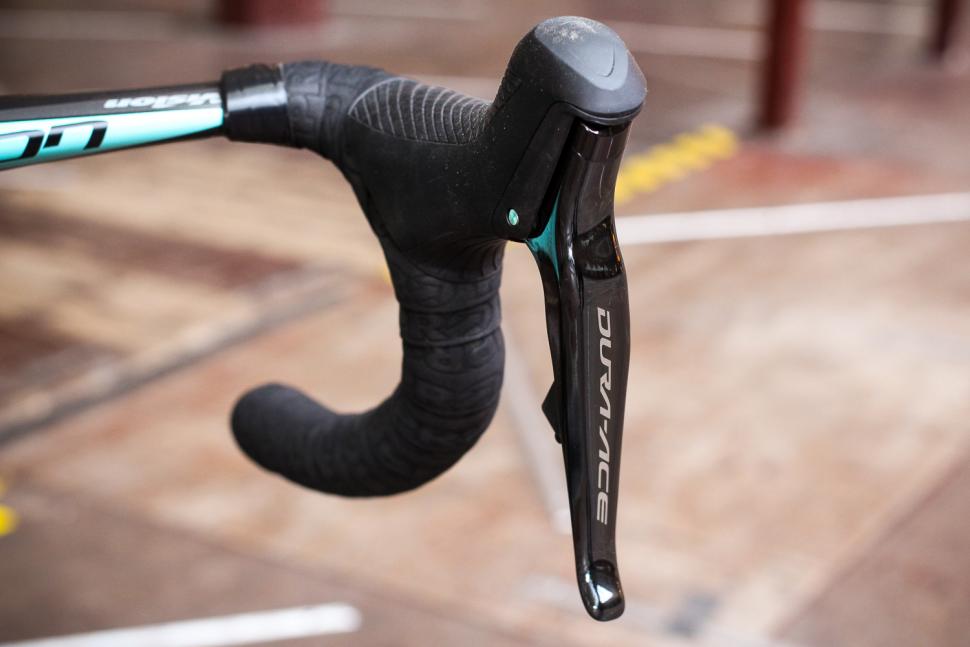


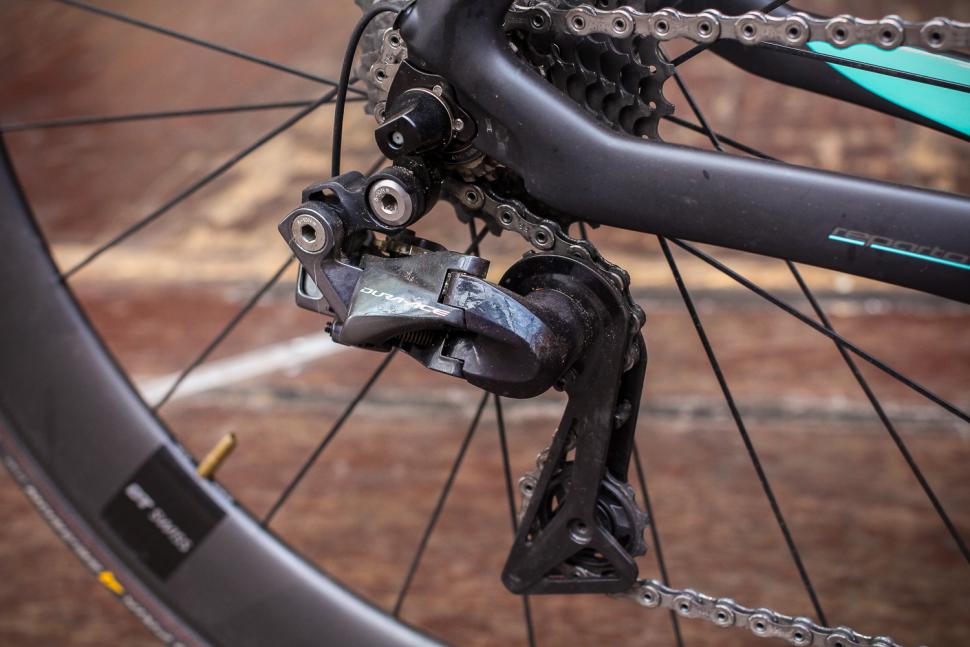
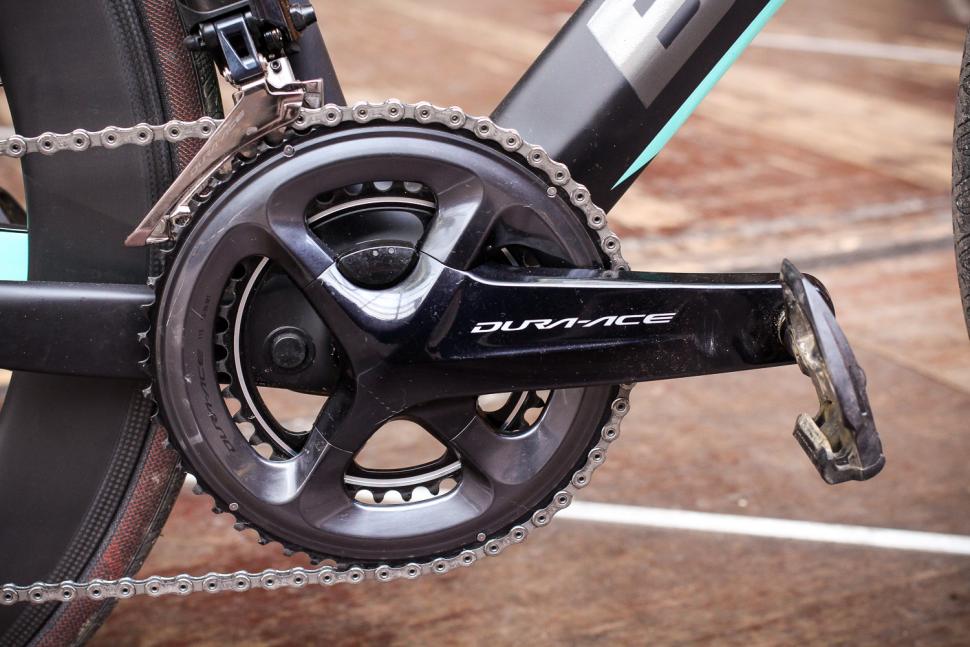
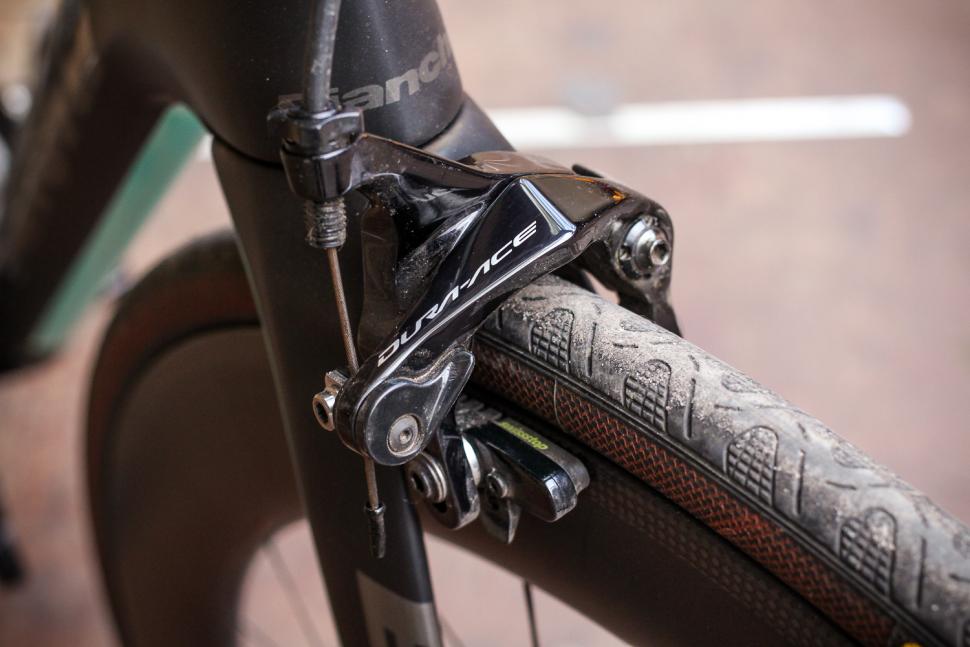
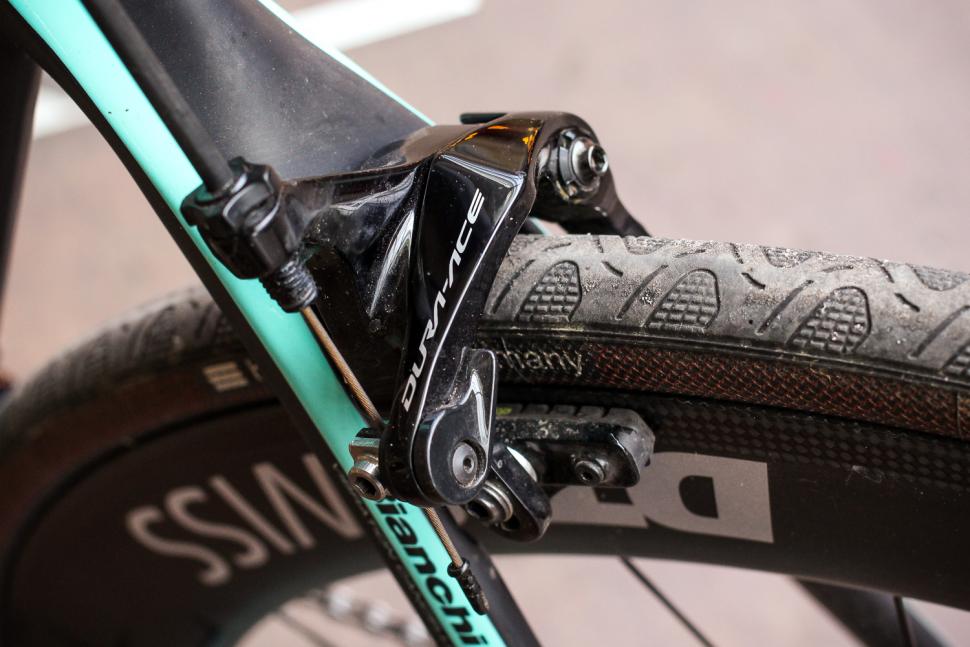
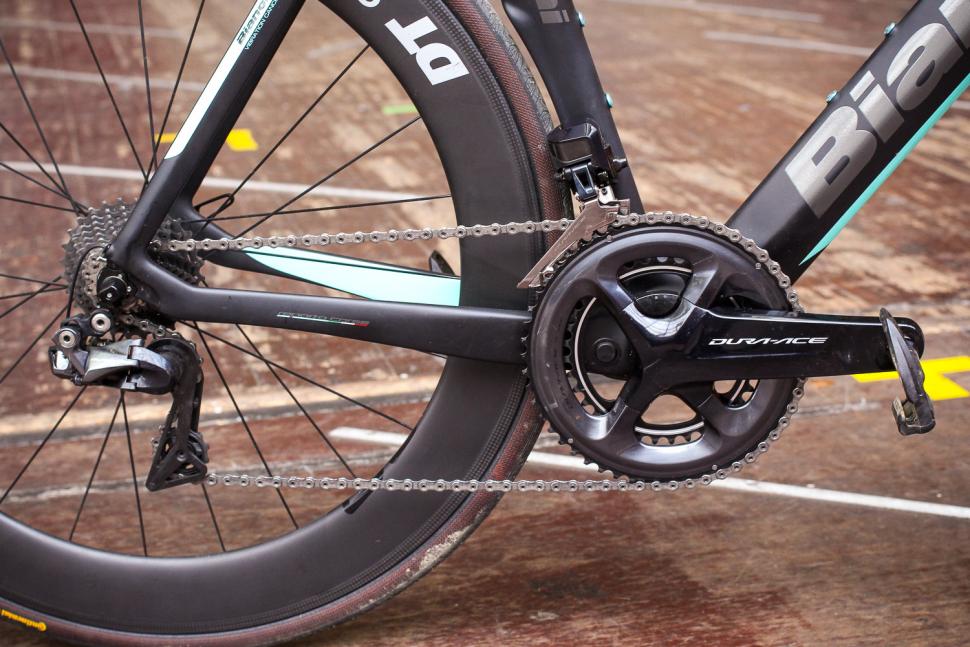




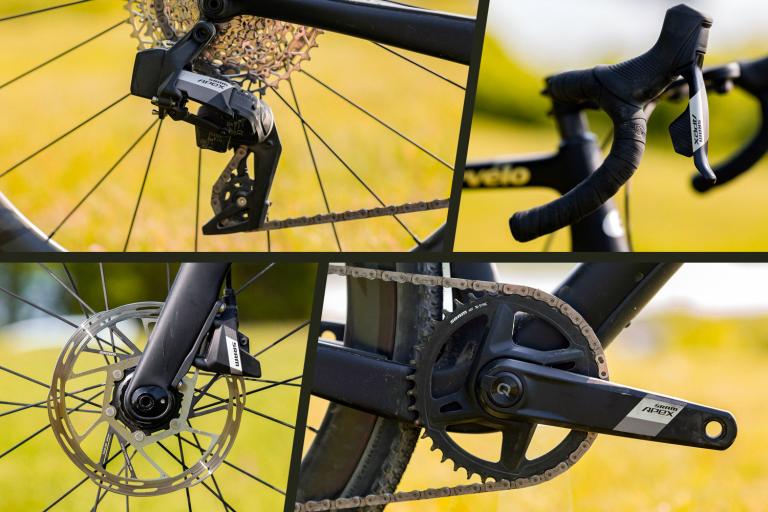
Add new comment
15 comments
With full synchro, do you need both Di2 levers to be present?
The BR400 levers are less than £30 a pair, and 100g lighter. That's a significant (in terms of a £3k groupset) weight saving.
I don't believe so. I'm running the older Ultegra Di2 with full synchro and I hardly ever use the left lever. You can customise the levers/buttons whichever way you want, so there shouldn't be a problem with only one Di2 lever.
Sheesh, you lot are miserable. Personally well done for shimano for advancing the cause and continuing to add new functionality.
They’ve bought new features to their top line product set, they made the majority of the new features available as an upgrade to the previous version for a fairly minimal cost (I’ve upgraded my 9070, liking synchro shift) and they trickle down the features to a far more affordable groupset after 9 or so months (ultegra).
And everyone still complains.....it’s almost as if they aren’t a charity...
Not sure exactly what has justified Shimano in doubling their cassette prices in the last few years.
You used to be able to get a DA cassette for £100 not so long ago, which still isn't cheap.
Now £230? It's essentially the same cassette, no big technology changes here.
Eh ? Are you talking about RRP ? You can pick up DA 9000 cassettes for about £ 120-140, and DA 9100 for £ 135-170. Not cheap indeed but hardly doubled...
I like the bit which reads it would be... "useful to someone coming into the use of dual derailleurs for the first time".
Somehow I can't see a £3k plus groupset being many peoples first experience of using a front changer.
Quite. I found that particularly amusing.
Being a recent convert from 9000 to 9070, I can see some advantages in 9150, but mainly in the electro-technology space.
The bluetooth enablement is a big plus (and yes it can be obtained on 9070 with a costly new battery and unit) as I get annoyed that any changes I have to make are using a Windows PC (which I no longer have). Plus my bike isn't stored at home which makes this even more of a pain. But this isn't something that is altered often after set-up - if ever.
Design wise I still prefer 9070, particularly the chainset and rear mech. The moving of the junction box from stem to bar ends is a step forward, but you obviously need to have a bar that accomodates this.
The rear mech just reminds me of Clippy, the old Windows Office Assistant
Could have cleaned your bike first
Mmm.
I’m sure it’s lovely, and being all techy and shiny it will find a market even outside the pro teams, but there’s as much chance of me getting to use this as there is of me driving an F1 car to Sainsbury’s (other supermarkets are available).
I know we mere mortals are supposed to benefit from technology trickling down from these flagship models, but I can’t help feeling that things are being pushed in a direction, which will not benefit the majority of us cycling enthusiasts.
I quite like the idea that I can understand all the oily bits on my bike – when something needs fixing or adjusting I have a fair idea of how to do it. I enjoy doing it too – for me the fettling is part of the cycling experience.
It used to be like that with cars. I know they were a bit shitty, and wouldn’t always start, but at least an owner had a fighting chance of getting it going again without resorting to the Oily Smirk at the garage. Nowadays if your car won’t start - even after you’ve turned it off and turned it on again – you have no choice but to resort to the Oily Smirk MkII at the Authorised and Franchised Dealership, who will plug in a lap-top and announce that you need a new unfathomable silicon-chip-based widget (costing an arm and a leg) to make it all better. This service dependency is of course built-in to the profit model for the car manufacturer, which would go bust without it.
It’ll be the same with your bike soon, if we don’t watch out.
Rant over.
I think there will always always always be mechanical gears available for bikes for the simple reason that they must be really profitable for the makers. Once they've got all the development and manufacturing tooling sorted out they can churn them out for pennies. I suppose there could come a time where all the fancy halo groupsets are electronic, leaving the more agricultural lower tier stuff as mechanical, but given how good Sora and Tiagra are these days I'm not sure that would be a bad thing.
I wish I shared your confidence, but electronics are also cheap to manufacture!
It's profits that drive business, so businesses will go where the profit is greatest. It's so easy to build in obsolescence to electronic devices (especially when they are made reliant on external devices to set them up), that the manufacturers may feel they could make more money by forcing rapid replacement strategies on consumers. Look at mobile phones for example - last year's phone was the bees knees, and did more than you could ever need, but by next year the software won't run on it any more........
Yes, electronics can get pretty inexpensive. I'm sure that when costs are finally amortized, Shimano is making more on the electronic. I'm sure electronics assembly is cheaper than mechanical because it is probably easier to automate.
Currently all the electronic shifting is just adding motors to the mechanical systems- the parallelogram mechanisms are mostly the same geometry with a motor driving it, so electronic and mechanical derailleur development are closely linked.
Wait until the manufacturers start designing around other capabilities of the motors instead of using the existing parallelogram mechanism, then electronic and mechanical development will diverge, with mechanical falling behind.
And let's not even get into mechanical shifter development and the years of refinement they've seen for smoother and lighter shifting vs. adding switches to a brake lever. So electronic system brifters would be cheaper than mechanical, but currently it's the other way for derailleurs.
On the other hand, Shimano has expressed no interest in 105 level (or lower) Di2, so yes, mechanical will still be available for the forseeable future.
My phone was released in Sept 2014 and I'm still using it. In fact it's so good I've got two, one as a back up. There's such a thing as firmware mods. The only problem is the people that are using electronic gears aren't as clever as phone modders. This is why we need electronic gears to trickle down to prices that teens can afford. They're the ones with the intelligence, the time and the motivation to get more out of their gadgets.